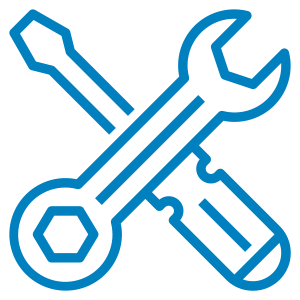Which is the Right Office Desk for Me?
Do you need a new office desk, or regret buying the one you've already got? There are so many styles these days that, unless you have all the time in the world to research them all, it is almost impossible to know which one to choose! That's why we are going to break these office desk styles down into three main categories for you, to help keep things simple, and help you to find the right desk for you.

Classic Office Desks
Traditional Office Desk
The traditional office desk had a simple design, going for geometric lines and practical features rather than extravagance. The simple rectangular desk top would sit atop wooden panel legs, or a steel cantilever frame, and that was that. Simple but effective. Over the years there have been several tweaks of this basic design. These include different base types, finishes, sizes, and cable management options, like portholes, as the age of the computer emerged. Three of the most popular variations on the classic design which have stuck around as far as today include corner desks, wave desks, and the desk with fixed storage pedestal.

Bench Desks
Contemporary Bench Style Desk
Over the years the bench desk style of office desk has become more prevalent in the modern office work-space. This is primarily because of its innovative shared leg system, which allows you to save on floor space. Furthermore, the bench design allows for more leg room beneath the desk. They are also ideal for those who work in teams, be they small or large. Varied leg styles have emerged too, but most common styles are the tried and tested pole leg, the 'A' frame leg, and the 'Square' leg.

Sit/Stand Desks
Ergonomic Sit/Stand Office Desk
The latest addition to the desk design world was designed with the goal of optimising human health. Scientific studies have shown how beneficial it is for us to not be seated for long periods of time. So, bring on the sit/stand desk, also know as the ergonomic desk, and the height adjustable desk. It was designed, and has since been proven to lower the risk of musculoskeletal disorders, reduce sick leave by minimising injuries, reduce user stress, help workers stay focused, and improve productivity. Operated via a crank handle, or now more commonly via an electric touch-pad, these ergonomic desks allow each individual user to find the best seated height for their specific body type, and of course, to stand while working.







